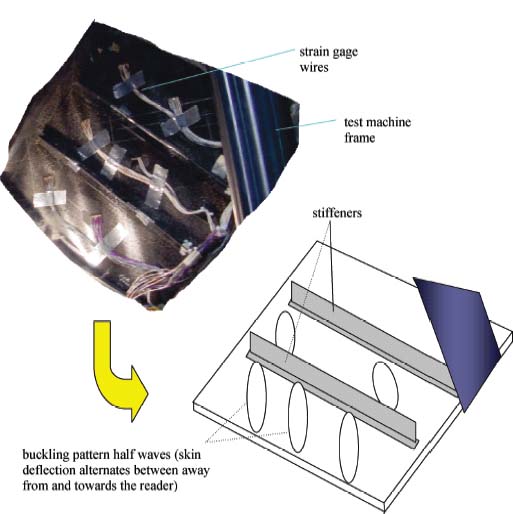6
Buckling of Composite Plates
Composite plates under compression and/or shear loading are sensitive to buckling failures. A typical situation where a stiffened composite plate has buckled between the stiffeners is shown in Figure 6.1.
Figure 6.1 Composite stiffened panel buckling under shear

Unlike beams, where buckling is, typically, very close to final failure, plates may have significant post-buckling ability (see Chapter 7). However, post-buckling of composite plates requires accurate knowledge of the possible failure modes and their potential interaction. For example, in a stiffened panel such as that of Figure 6.1, the portion of the skin buckling away from the reader tends to peel off the stiffeners. The skin–stiffener separation mode is fairly common in post-buckled stiffened panels and may lead to premature failure. Depending on the application, designing for buckling and using any post-buckling capability as an extra degree of conservatism is one of the possible approaches. Even in post-buckled panels, accurate calculation of the buckling load for different loading combinations and boundary conditions is paramount in the design.
6.1 Buckling of Rectangular Composite Plate under Biaxial Loading
The derivation of the buckling equation follows the approach described by Whitney [1]. A rectangular composite plate under biaxial loading is shown in Figure 6.2.
Get Design and Analysis of Composite Structures: With Applications to Aerospace Structures, 2nd Edition now with the O’Reilly learning platform.
O’Reilly members experience books, live events, courses curated by job role, and more from O’Reilly and nearly 200 top publishers.

